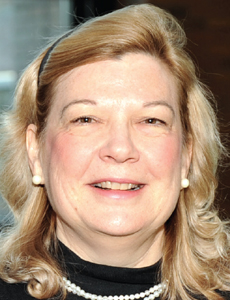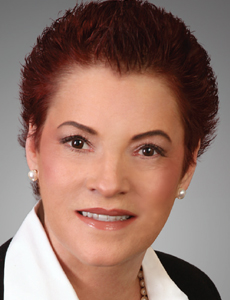Generic Drug Regulations
Rule Change

A far-reaching new rule proposed by the Food and Drug Administration has the nation’s generic drug manufacturers in a stir.
The proposed rule would require makers of generic drugs to update their warning labels for the first time.
Historically, generics manufacturers were shielded from liability, because they were required to use only the warning label language used by the branded drug maker from which the generic was derived.
If the rule becomes law, it will lead to significant insurance changes, including higher premiums, more clinical tests, more lawsuits and greater staffing, as well as heightened attention to risk management issues.
“I think it’s going to be even more important for the generic drug companies to differentiate themselves because there’s going to be much more scrutiny on them from an underwriting perspective.” — Darlene Villoresi, managing director, Marsh life sciences practice
“I will say that anything like this that creates uncertainty in the litigation climate can have a negative effect on premiums, rates and availability of insurance coverage,” said Jim Walters, Philadelphia-based managing director of the life sciences and chemicals practice at Aon Risk Solutions.
“That historically is what has happened when uncertainty reaches the litigation climate,” Walters added.
Having to do their own clinical studies to support label changes will create a tremendous amount of expense for the generics industry, Walters said.
Alison J. Renner, CEO of Chicago-based A.J. Renner & Associates, a wholesale pharmaceutical specialty broker with a strong suit in generics, said that generics manufacturers will need to be aggressive about adverse event reporting of their own products, as well as conduct extensive independent review of reported events and information from the FDA and all other sources available to them.
In addition to legal concerns, said Renner, it is more than likely that certain high-risk products that are currently “insurable” due mainly to the current legal climate will become generally excluded.
“They will need to demonstrate to underwriters that they have best-in-class procedures,” said Renner of the generic drug makers.
“Being able to demonstrate near perfection in labeling will also form a cornerstone of defense of product liability actions going forward.”
John Parente, Boston-based assistant vice president of life sciences at Berkshire Hathaway Specialty Insurance, said the generic manufacturers’ fears center on how they will make labels consistent for each product.
“When you have multiple generic pharmaceutical manufacturing companies producing Tylenol, with the generic name acetaminophen, you could have many different labels warning of multiple or different side effects versus having one consistent label that the medical community can look at and agree upon,” Parente said.
The FDA and supporters of the proposed rule say that the rule change will pressure generic drug makers to be more proactive in discovering when drugs are harming patients and to provide accurate labeling for those drugs.
Generics Save Billions
Generic drugs, which account for more than 80 percent of all drugs manufactured in the U.S., were brought into existence by the 1984 Hatch-Waxman Act, which ensures the safety and affordability of generic drugs by requiring manufacturers to duplicate the effectiveness and labels of FDA-approved brand-name drugs.
One of the most attractive things about generic drugs is their relative cost. A generic industry trade organization points to the huge savings generated by generics.
VIDEO: Even with the current FDA regulations, some are worried about the safety of generic drugs. This CBS report looks at an Indian company that falsified data as part of regulatory approval process.
“The world’s leading health care analytics firm, IMS Institute for Healthcare Information, found that generics saved $239 billion in the U.S. in 2013 (a 14 percent increase in savings from 2012) and more than $1.6 trillion over the recent decade,” according to the Washington, D.C.-based Generic Pharmaceutical Association.
The association is threatening to sue the FDA if the agency finalizes its labeling regulation in its present form.
Critics of the proposed new rule argue that it would increase drug costs by $4 billion a year and lead to a confusing array of labels for the same drug.
But Janet Woodcock, director of the FDA’s Center for Drug Evaluation and Research, said the proposed rule would create parity among application holders and “would speed the dissemination of new safety information about generic drugs to health professionals and patients.”
The FDA’s controversial new rule was expected to be finalized last December, but will not be published until the fall of 2015, an agency spokeswoman said.
If adopted, the FDA rule would put in doubt two landmark U.S. Supreme Court decisions that currently protect generics manufacturers from most liability lawsuits.
In PLIVA vs. Mensing, a woman who took a generic drug had a horrible reaction to it. In June, 2011 the Supreme Court ruled that the generic manufacturer, under federal law could not alter the label, therefore it was not liable.
In a similar case, Mutual Pharmaceutical Co. vs. Bartlett, the Supreme Court held in June 2013 that federal law pre-empted a state law that would have required the generic manufacturer to make a safer drug, either by altering the drug’s composition or through changes in its labeling.
One well-regarded industry observer noted that the erosion of the Mensing and Bartlett defenses could increase claim expenses and potential judgments, which would likely impact the availability and affordability of generics product liability policies.
“In the event the rule went through as proposed, the degree and scope of the increased litigation might not only impact the cost of insurance but also the amount of capacity available,” the expert said.
Risk Management Needed

Kati Ballantyne, assistant vice president and life science underwriting manager, Chubb Group of Insurance Cos
Kati Ballantyne, Whitehouse Station, N.J.-based assistant vice president and life science underwriting manager for Chubb Group of Insurance Cos., said that if the rule goes through as proposed, generic drug companies will face material changes in labeling and may consider adopting practices similar to those used by the innovator drug companies to help ensure that they’re doing all they can to identify potential patient issues that belong on the label.
“The changes may come at a cost for generic drug companies and could potentially have a downstream impact on the ultimate consumers,” Ballantyne noted.
Ballantyne added that if the rule is adopted, some best practices in risk management that would be critical include effectively managing adverse events, identifying trends in adverse events, and executing rapid escalation plans for external and internal early reporting to the FDA of adverse event trends that may warrant a label change.
“In addition, generic drug companies will need to make manufacturing adjustments to ensure the timeliness of changing labels,” Ballantyne said.
Allison Zieve, general counsel and director of the litigation group for the Washington, D.C.-based advocacy group Public Citizen, said, “The way the regulating scheme is set up, the drug manufacturers have the primary responsibility for ensuring the adequacy of the labeling. That makes sense because the FDA doesn’t have the resources to monitor the thousands of drugs on the market.
“Most of the labeling changes are based on adverse-event reports submitted to the FDA, and the FDA makes those reports available to any manufacturer,” she said.
If the FDA rule goes through as proposed, there are a couple of important impacts, said Darlene Villoresi, Morristown, N.J.-based managing director with Marsh’s life sciences practice.
“One is all about differentiation,” she said.
Underwriting Scrutiny
“I think it’s going to be even more important for the generic drug companies to differentiate themselves because there’s going to be much more scrutiny on them from an underwriting perspective.
“They’re going to get many more questions about underwriting data more in line with the branded drugs.”
Right now, she said, they’re protected from failure-to-warn claims so the underwriters don’t focus as much on pharmacovigilance.
If the proposed rule is adopted as planned, or in some form close to its current structure, Villoresi also envisions an impact on pricing.
There will be more pressure on generic companies to implement new programs to detect early warning signs for adverse events, and that’s going to cost money, she said.
“And underwriters will evaluate how successful they are in their plans, including how well they’re tracking their adverse events, their safety signals, how well they are identifying safety trends in the products that are out there,” Villoresi said.
In the risk management realm, Chubb’s Ballantyne said that the key to successful management of the FDA proposal is the implementation of best practices by the generic drug companies going forward.
“Since the FDA proposal first became known about a year and a half ago, we’ve been working with our customers in anticipation of the change to help them achieve best practices,” Ballantyne said.
“We’ve utilized our loss control expertise in the area of post-market surveillance and anticipate that our resources in this area will grow in value to those drug companies if the proposal goes through,” she said.
Aon Risk Solutions’ Walters said his team’s advice for generic drug manufacturers is to beef up their staffs and urge them to have the necessary tools to monitor adverse events and trends more effectively.
“There are lots of third parties that can help with monitoring adverse events, and we would look to advise our generic manufacturer clients with help from companies like these,” Walters said.











